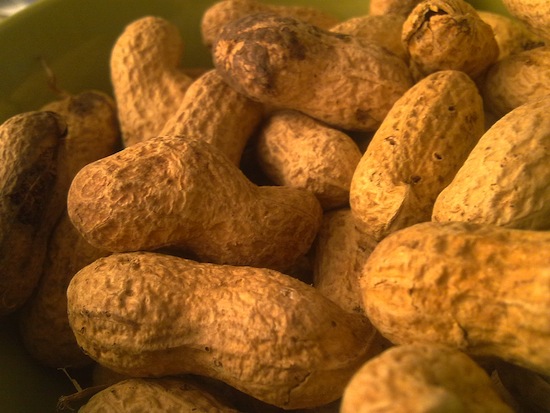April 19, 2012
The Legumes of War: How Peanuts Fed the Confederacy
When it came to fighting the Civil War, the South may have been rich in military leadership, but the North had superior resources, especially when it came to industrial strength. Still a largely agrarian society, the Southern states had to import most of their manufactured products, and with a poor railway system, keeping troops well-stocked was a battle in and of itself, especially when enemy blockades interrupted supply lines. Combined with inflation and scorched-earth military campaigns—such as General Sherman’s march through South Carolina—food shortages were a problem for both military and civilians. But even in those hard times, people could find relief in peanuts.
Before the Civil War, peanuts were not a widely cultivated crop in the United States—Virginia and North Carolina were the principal producers—and were generally viewed as a foodstuff fit for the lowest social classes and for livestock. When they were consumed, they were usually eaten raw, boiled or roasted, although a few cookbooks suggested ways to make dessert items with them. The goober pea’s status in the Southern diet changed during the war as other foods became scarce. An excellent source of protein, peanuts were seen as a means of fighting malnutrition. (And they still are, with products such as Plumpy’nut being used in famine-plagued parts of the world.) In addition to their prewar modes of consumption, people used peanuts as a substitute for items that were no longer readily available, such as grinding them to a paste and blending them with milk and sugar when coffee was scarce. “This appreciation [for peanuts] was real,” Andrew F. Smith wrote inPeanuts: The Illustrious History of the Goober Pea. “Southerners continued to drink peanut beverages decades after the war ended.” Peanut oil was used to lubricate locomotives when whale oil could not be obtained—and had the advantage of not gumming up the machinery—while housewives saw it as a sound stand-in for lard and shortening as well as lamp fuel.
Peanuts became ingrained in the culture, going so far as to crop up in music. For Virginian soldiers wanting to take a dig at North Carolina’s peanut crop, there was:
The goobers they are smallOver thar!The goobers they are smallOver thar!The goobers they are small,And they digs them in the fall,And they eats them, shells and all,Over thar!
The humorous song “Eatin’ Goober Peas” also surfaced during the war wears. (You can hear the song in full as performed by Burl Ives and Johnny Cash.)
Just before the battle the General hears a row,He says, “The Yanks are coming, I hear the rifles now,”He turns around in wonder, and what do you think he sees?The Georgia militia eating goober peas!
There is also an account of a July 1863 episode where the Confederate Army’s Fifth Company of the Washington Artillery of New Orleans was entrenched in Jackson, Mississippi, and burned down a mansion in order to clear their view of the battlefield—although not before saving a piano. As the Union Army drew nearer, one soldier took to the ivories, encouraging his compatriots to join in song, including a round of “You Shan’t Have Any of My Peanuts”:
The man who has plenty of good peanuts,And giveth his neighbor none,He shan’t have any of my peanuts when his peanuts are gone.
While the Fifth Company succeeded in keeping the enemy at bay that day, peanuts just weren’t enough to save the Confederacy in the long haul.

No comments:
Post a Comment